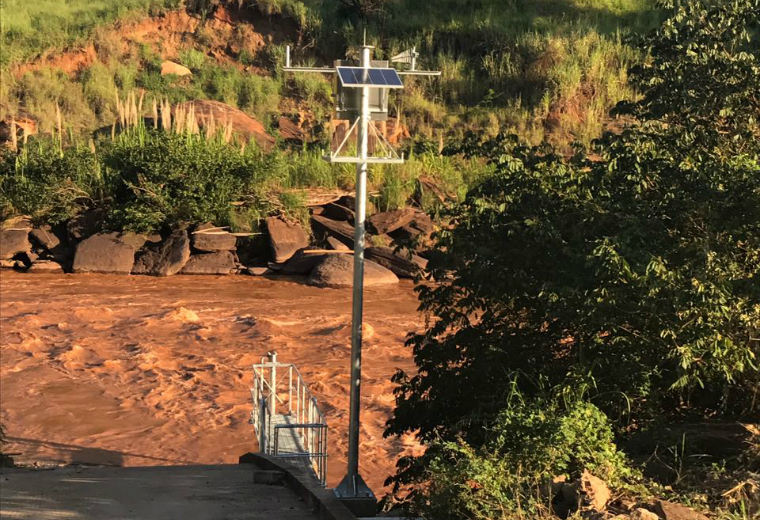Indicators, such as turbidity, pH and the air temperature will be monitored every hour
The qualitative and quantitative monitoring of the water in the stretch between Mariana, in Minas Gerais and the coast of Espirito Santo is important for ensuring the quality of the resource that reaches the population. Because of this, three stations for automatic monitoring, installed between the hydroelectric plant Risoleta Neves (Candonga) and the municipality of Sem-Peixe (MG), will start their operation this week.
The measurements will be made by an automatic probe which will transmit the new readings every hour, via satellite or a 3G network, to a web portal accessible to the teams involved in the environmental monitoring. Various indicators will be analyzed, such as turbidity, pH, dissolved oxygen in water and even air temperature.

The automatic monitoring equipment has been installed at three points in the Doce River. | Photo: Release
The automation engineer, Luiz Cláudio da Silva, says that new automatic stations will be installed to optimize the water quality monitoring of the Doce River. “19 other evaluation points are planned for different locations. We believe that this technology will facilitate the work of the field teams, given that the access to the information will be faster and the results will be more accurate”, he says.
Automatic monitoring is provided for in the Permanent Quanti-Qualitative Monitoring Plan, document required by the Transaction and Conduct Adjustment Term (TTAC).
